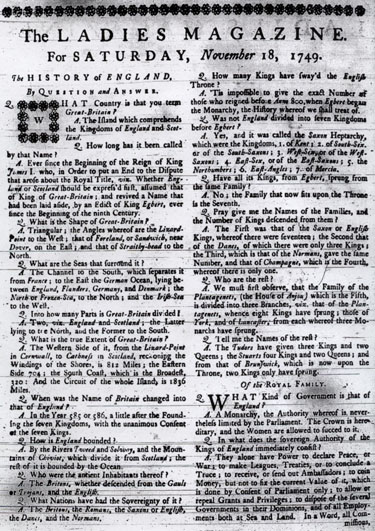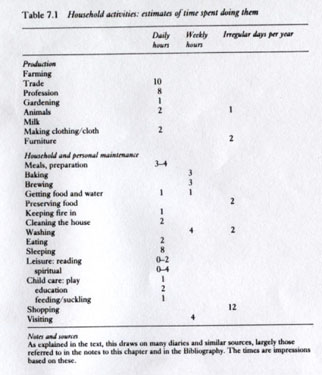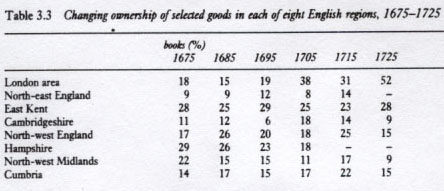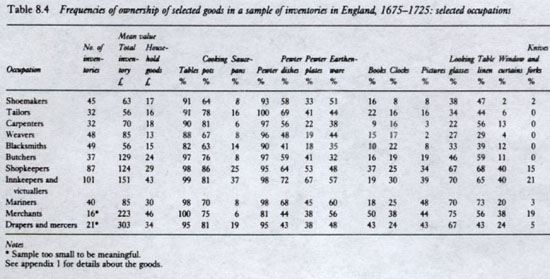Customer: Mr. Tonson, I'm curious about literacy during this period. I mean, who can read in the first place?
Tonson: That's a really important question to ask, for where would the bookselling business be without the readers? Well, to answer your question, I first have to point out to you the general importance of a language becoming more prevalent in print form. By printing English in the form of newspapers and novels, the language becomes standardized to an extent, losing the redundancy and sloppiness of a strictly oral language. This increased prevalence of print also means that being literate is much more important if someone wants to have any idea of what is going on in the world.51
Customer: Sure, that makes sense, but what about literacy?
Tonson: Well, literacy in eighteenth-century England is actually a much-debated subject. Some numbers suggest that literacy is as low as 30%.52 Other figures state that literacy remained fairly steady between 1700-1790 for men, around 60%, while it rose in women from 40-50%.53 Nonetheless, four times as many books were published in 1790 than in 1700. So, though these numbers may not signify a huge change, it is important to point out that around three-fourths of the English population is still rural farmers who do not need to read regularly.54 In addition though, there are also a number of people who cannot write but are able enough to read cheap prints like almanacs and chapbooks.55 Though there is some dispute on literacy in the period, essentially, though literacy may not have skyrocketed, it is a fact that print is in much wider circulation and much more popular.
Customer: Wouldn't education have something to do with the literacy and the controversy surrounding it in some way?
Tonson: To an extent, yes. Education in the eighteenth century tends to move away from purely religious teaching to a focus on ideas and knowledge, which is certainly paralleled by the wider varieties of writings at this time. So, reading and writing are of more importance culturally than practically. It has become an accepted norm that most people read. In terms of who gets schooling, the thing is that the eighteenth century saw the start of private trade and commercialized schools for lower-middle class males, which means that though the elite are of course getting schooled well, other classes of people are also learning how to read and write. As for women, the availablility of women's magazines like The Ladies' Magazine proves that women are taking a more active role in reading. There are also girls' boarding schools, but for the most part, women are still subject to male dominance, and hence fewer women than men have learned to read.56
Customer: This still seems kind of conflicting and uncertain.
An excerpt from The Ladies Magazine.57
Tonson: It's hard for historians to pinpoint exactly what the deal with literacy is in the eighteenth century. However, it is a certainty that print culture has expanded greatly, making reading and writing more prominent in society if nothing else. For your own perusal Customer, here are some charts concerning the prevalence of reading in the eighteenth century. They all illustrate how reading grew and expanded in this century, which obviously suggest with a growth in literacy.
The above table is a break down of a day in the life of an eighteenth-century English person. Notice the 0-2 hours spent on reading.58
The above chart illustrates the growth of book ownership, especially in London.59
This chart shows what goods people of certain occupations owned. Note the high percentages of merchants and drappers who own books relative to carpenters and weavers.60
Back to Chat Printing Bookbinding Sales and Advertising Booksellers











